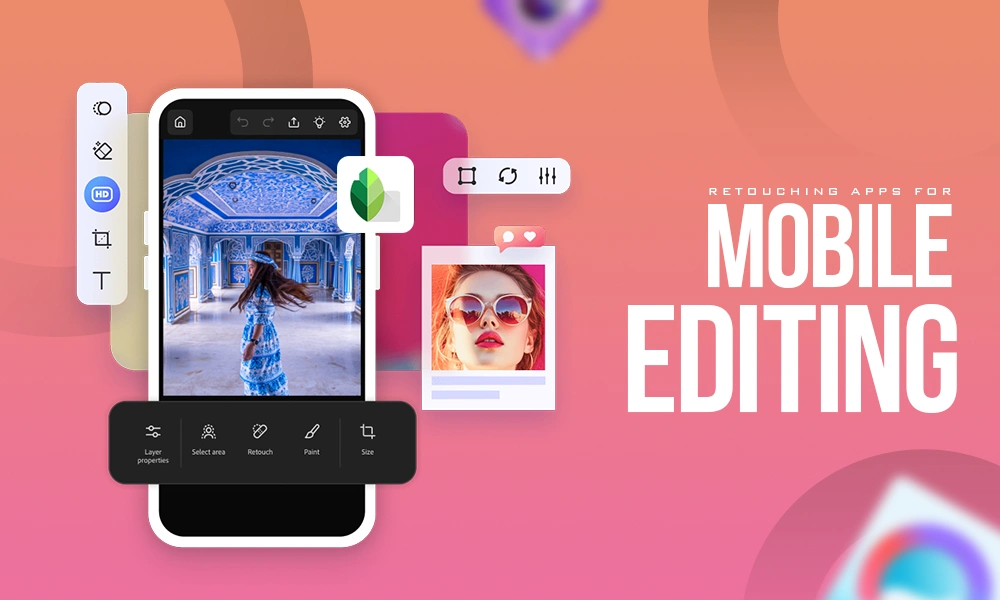Graphic design is not merely colours, text, and images; it is the art of communicating ideas with imagination. From iconic logos to vintage posters to branding identities, top designers have changed how the world sees and thinks about brands.
Over time, there have been many graphic designers who have become well known for their imagination, innovation, and influence on today’s design. In this article, we will celebrate some of the most noted graphic designers around the world who have and continue to inspire professionals and amateurs alike.
Paul Rand
Often considered the father of modern graphic design, Paul Rand altered the notion of corporate branding. His work, including logos for IBM, ABC, UPS, and NeXT, transformed the way brands have a visual connection.
Rand’s philosophy on design was clear; it should be simple, functional, and meaningful, a philosophy that influenced generations of designers after him. His book Thoughts on Design has maintained a place as one of the most important guides for design, emphasising clarity, purpose, and visual story.
Even long after his life has ended, his clean, timeless way defines the centre of professional graphic design.
Read Also: What is Photo Editing
Paula Scher
Paula Scher is among the world’s most influential and respected designers today. Known for her lively and colourful use of typography, she has created many memorable identities and branding for clients such as Microsoft, Citibank, and the Public Theatre.
Scher has also been the first female principal at the distinguished design firm Pentagram, making her a true pioneer. Her unique approach to expressive type and identity design has changed how we think about contemporary branding.
She is frequently mentioned as one of the top graphic designers of the 21st Century, inspiring innumerable designers internationally.
Peter Saville
Peter Saville integrated art, music, and design in unexpected ways. He is perhaps most well-known for his record artwork for bands such as Joy Division and New Order, where he infused a sense of minimalism and cultural meaning to mass visual culture.
Throughout his work, Saville often incorporated symmetry, negative space, and a sense of conceptual storytelling. Though he is best known for record art, Saville has also worked with major brands and fashion houses, demonstrating that great design is a sensibility that can cross industries and disciplines. His work continues to inspire emerging designers who explore art and commercial design.
Read Also: When Was The First Photograph Ever Taken
Herb Lubalin
Herb Lubalin’s name is a reference point for expressive typography. He was famous for being able to create art from letters, and produced some of the most imaginative and emotional typographic pieces in the 20th century.
His way of working with typography was less focused on readability and more on considering typefaces as forms of illustrations that could suggest thoughts and feelings. His work in magazines, advertising and logos encourages continued study for its originality and impact.
Many established design styles today that are focused on typography can be traced back to Lubalin’s daring experiments with letterforms.
Otl Aicher
Otl Aicher, a German designer, was ahead of his time in developing systematic visual communication. Aicher is most qualified for creating the pictorial language and design system for the 1972 Munich Olympics, which established a new standard worldwide for clarity, simplicity and universal understanding.
His portfolio included brand design for both Lufthansa and Braun, and Aicher’s melding of modernist principles and human-centred design sensibilities had a lasting impact on these companies too. Aicher’s contributions can be seen even in public signage systems or in graphic design variables such as minimalist packaging.
These ongoing effects of Aicher’s work make him one of the greatest graphic designers, producing graphic design that straightforwardly expresses logic and creativity.
Ivan Chermayeff
Ivan Chermayeff, a principal of Chermayeff & Geismar, was responsible for numerous famous logos such as NBC, Pan Am, and Mobil, among many others. His philosophy of creating symbols was based on a design that is visually-emotive without ever feeling dated.
His works are always simple, geometric, and colourful, demonstrating the strength of a minimalist approach. Chermayeff described the purpose of a good logo as creating a story with one visual. Chermayeff’s work continues to inspire brand designers in hopes of creating instantly recognisable and enduring visual identities.
Milton Glaser
Any compilation of notable graphic designers cannot be considered complete without Milton Glaser it. One of the logos he is best known for is the “I ♥ NY” logo, which Laura said captured the essence of an entire city with a single logo. He also created a poster of Bob Dylan that incorporated a psychedelic pattern with Dylan’s hair.
It was a printed piece of art that became a cultural symbol in the 1960s. Glaser believed that design is not only about style, but that it is also about a purpose that makes people relate to an idea or a purpose. His humanistic and emotional process will continue to inspire designers across every medium.
Conclusion
These prolific designers have altered the perception of visual communication throughout history. When asked, “Who is the best graphic designer in the world?” it can be hard to nail down just one.
Paul Rand is referred to as the father of modern graphic design for his pioneering work in corporate identity, while Paula Scher and Milton Glaser are equally celebrated for their cultural relevance and creativity.
The wealthiest graphic designers, from a wealth perspective, are usually those designers who have successfully translated their creativity into international brands or large design firms.
FAQs
Q1. Who is currently the most famous graphic designer?
Ans: Some of the most well-known contemporary designers shaping the visual culture of today include Paula Scher, Jessica Walsh, and Michael Bierut.
Q2. Can anyone become a successful graphic designer?
Ans: Yes, as long as they have creativity, commitment, and a solid grasp of the principles of design, anyone is capable of creating a successful career in graphic design.
Q3. What skills are important for a great graphic designer?
Ans: A great sense of visual awesomeness, creativity, technical ability to employ design tools, and in-depth knowledge of colour, typography, and composition.









